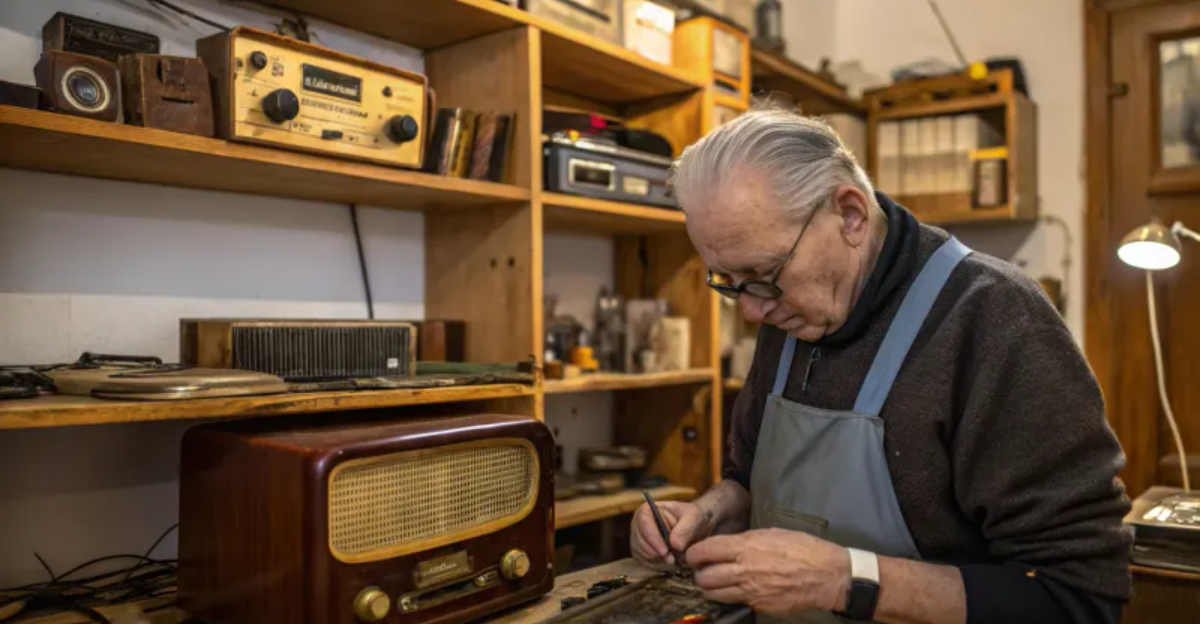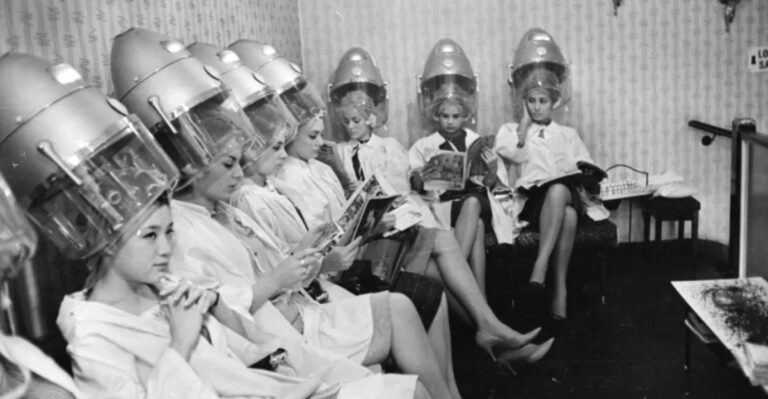26 Wonderful Things That Will Be Lost With The Baby Boomer Generation
As we stand on the cusp of a new era, we look back with fondness at the irreplaceable traditions, skills, and ways of life that shaped the Baby Boomer generation.
These are the things that filled our lives with warmth, character, and a sense of belonging. From the personal touch of handwritten letters to the generational bonds forged over Sunday family dinners, each aspect represents a cherished part of our collective memory.
This heartfelt tribute aims to honor those customs and experiences that made the Boomer era special, urging future generations to appreciate and preserve the essence of these treasured moments.
1. The Art of Handwritten Letters

Remember the anticipation of waiting for the mail, hoping for a letter from a friend or loved one? Handwritten letters carry a personal warmth and effort that emails simply can’t match. Each stroke of the pen, each carefully chosen word, was a piece of the sender’s heart. These letters were more than just communication; they were keepsakes, cherished for their sincerity and the emotions they conveyed.
Crafting a letter required thoughtfulness and time, allowing you to express your thoughts and feelings in a way that felt deeply personal. As technology advances, this beautiful tradition is fading, replaced by instant messages that lack the same depth and connection.
While the convenience of digital communication cannot be denied, the art of handwriting a letter is something we’ll sorely miss. It’s an act of love, a gesture of kindness that reminds us of the value in taking time to connect with others. Future generations may never know the joy of finding a surprise note in their mailbox, but we can keep this tradition alive by occasionally putting pen to paper.
See also: 33 Decisions Boomers Are Making That Will Leave Their Kids With Nothing
2. Sunday Family Dinners
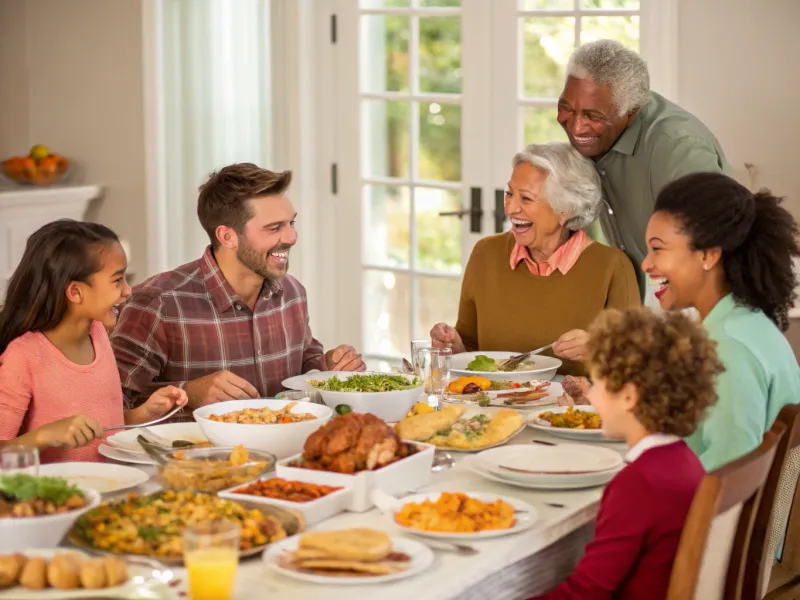
Sunday family dinners were more than just a meal; they were an event that brought generations together, strengthening bonds and creating memories. Picture a bustling dining room filled with the aroma of home-cooked dishes, the clatter of silverware, and the laughter of loved ones. These gatherings were a cornerstone of family life, a time to share stories, celebrate milestones, and support one another through life’s ups and downs.
The tradition of gathering around the table every Sunday is becoming rare, as modern life pulls families in different directions. Work commitments, digital distractions, and the fast pace of life often leave little room for such rituals. Yet, these dinners taught us the importance of connection, of taking time to listen and be heard.
Though times have changed, the value of family dinners remains. They offer a chance to slow down, to reconnect with those we care about, and to pass down traditions that define who we are. Even in a busy world, making time for a shared meal can keep the spirit of Sunday dinners alive.
3. Fixing Instead of Replacing
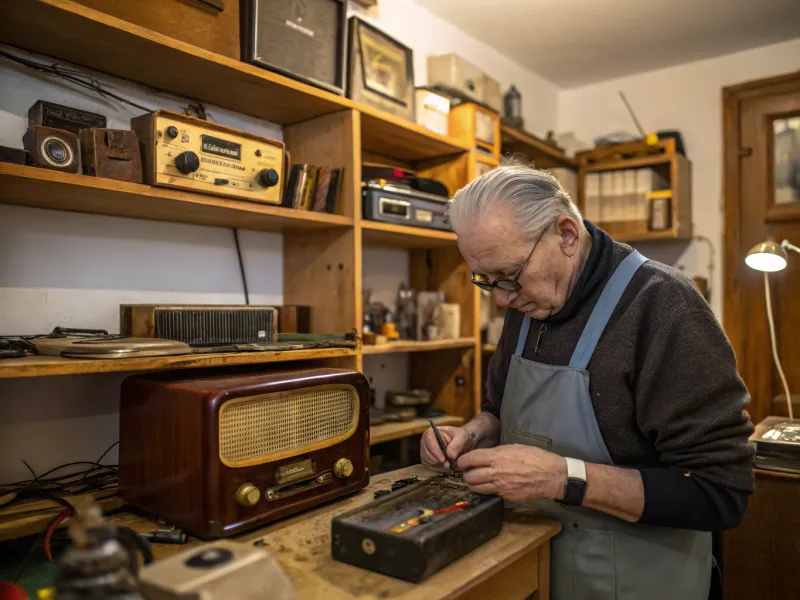
There once was a time when broken meant an opportunity to fix, not an excuse to discard. The Baby Boomer generation was adept at repairing appliances and household items, possessing the skills and patience to breathe new life into objects that today might be thrown away.
Fixing instead of replacing was not only practical but also environmentally friendly. It taught resourcefulness and ingenuity, encouraging us to value what we have and make the most of it. This mindset of conservation is something that seems to be fading, as consumer culture promotes convenience over craftsmanship.
While new technologies and products offer undeniable advantages, the art of repair is a valuable skill that should not be lost. Embracing a fixer mentality can lead to a more sustainable future, where we appreciate quality over quantity and learn to cherish the things we own. It’s a tradition worth reviving, a way to honor the past while building a more thoughtful future.
4. Memorizing Phone Numbers

Once upon a time, before smartphones stored every contact at the touch of a button, we memorized phone numbers. It was a mental exercise, a testament to our ability to remember and recall information without digital assistance. Knowing a friend’s or family member’s number by heart was not only convenient but also a sign of the connections we held dear.
Today, this skill is fading as technology takes over our memory. The convenience of digital address books has made memorization seem unnecessary, yet there’s a certain satisfaction in knowing you can mentally dial a number without relying on a device.
Memorizing numbers wasn’t just about practicality; it was about maintaining a personal connection with the people in our lives. It reminded us of the importance of relationships, of the effort we put into keeping those connections alive. While technology marches on, the ability to remember something as simple as a phone number is a small yet meaningful skill that ties us to a more personal past.
5. Reading Paper Maps

Before GPS and digital maps became ubiquitous, getting lost was part of the adventure. Reading paper maps was an essential skill, one that required patience, attention to detail, and a sense of direction. Unfolding a large map on the hood of a car, tracing routes with a finger, and planning the journey ahead was a cherished part of travel.
These maps were not only functional but also beautiful, filled with detailed markings and symbols that guided you through unknown territories. They represented the thrill of exploration, the joy of discovering new places without a screen telling you where to turn.
Today’s technology offers convenience and precision, but there’s something nostalgic about the tactile experience of a paper map. It encouraged curiosity, a willingness to embrace the unexpected, and a connection to the world around us. Though digital navigation has taken over, the art of reading a map is a reminder of the adventures that await when we venture beyond the beaten path.
6. Dressing Up for Occasions
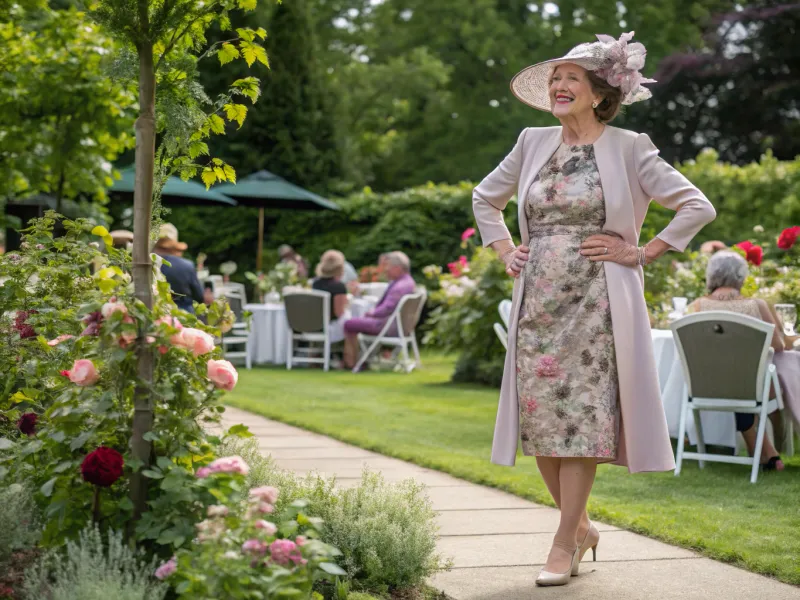
There was a time when style mattered, when dressing up for everyday occasions was a reflection of self-respect and appreciation for the moment. Whether attending a social gathering, going to church, or simply running errands, the Baby Boomer generation valued presentation and elegance.
Wardrobes were filled with carefully chosen outfits, each piece a statement of individuality and taste. Fashion was not about following trends but about expressing oneself with grace and confidence. This attention to detail and pride in appearance is something that seems to be fading in today’s casual world.
While comfort and convenience have their place, the act of dressing up is a celebration of who we are and how we wish to be perceived. It’s a tradition that teaches the importance of self-expression and the joy of putting effort into how we present ourselves to the world. Embracing this mindset can lead to a renewed appreciation for fashion as an art form, a way to honor the past while embracing the present.
7. Loyalty to Brands and Workplaces

Once, loyalty was a badge of honor, a sign of commitment to brands and workplaces that had earned our trust. The Baby Boomer generation often spent decades with the same employer, building careers and relationships that spanned a lifetime. This sense of allegiance extended to brands, where quality and consistency forged lasting connections.
Today, the landscape has shifted, with job-hopping and brand switching becoming the norm. While flexibility offers new opportunities, the loyalty of the past taught us the value of dedication, of investing time and effort into something greater than ourselves.
Loyalty was not just about staying in one place; it was about building a legacy, contributing to a community, and finding fulfillment in stability. Though the world has changed, there’s still merit in cultivating loyalty, in finding brands and workplaces that align with our values and rewarding them with our commitment. It’s a tradition that speaks to integrity, consistency, and the human desire for connection.
8. Listening to Full Albums

In an age of playlists and digital singles, the art of listening to full albums is becoming a rarity. The Baby Boomer generation understood music as an experience, a journey to be savored from start to finish. Each album was a carefully crafted story, with songs that flowed seamlessly into one another, creating a cohesive narrative.
Listening to an album was an immersive experience, one that required patience and attention. It was about appreciating the artist’s vision, understanding the themes and emotions woven into the music. This experience is something that is often lost in the shuffle of modern listening habits.
While music streaming offers convenience and variety, there’s something special about committing to an album and allowing it to unfold. It offers a deeper connection to the music, a chance to explore the nuances and artistry that might otherwise go unnoticed. Embracing this tradition can lead to a richer appreciation of music, a reminder of the stories and emotions that make it so powerful.
9. Sharing Wisdom Through Stories
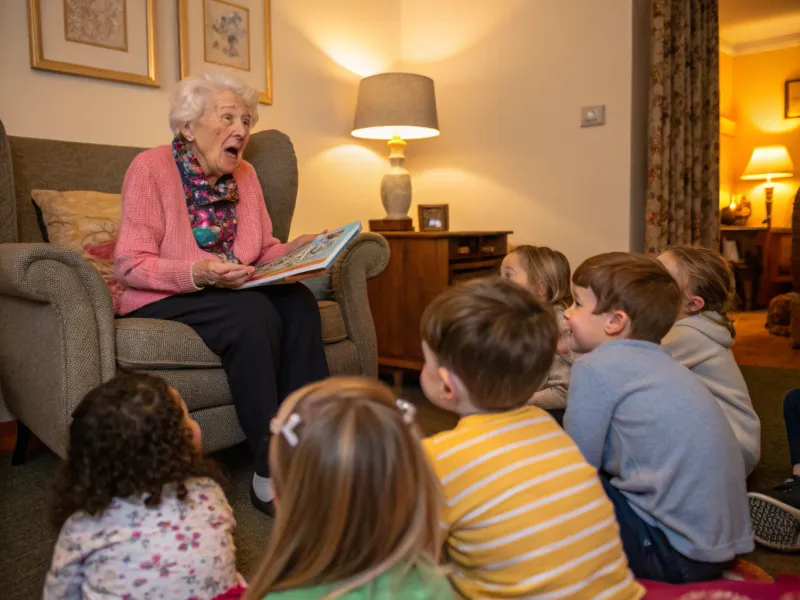
In a world where information is just a click away, the art of sharing wisdom through stories is fading. The Baby Boomer generation knew the power of a well-told tale, a way to impart lessons, values, and experiences that resonated deeply. Stories connected generations, offering insights that no search engine could replicate.
Telling stories was an act of love, a means of sharing a part of oneself with others. It required creativity, empathy, and the courage to open one’s heart. This tradition fostered a sense of community, a bond forged through shared experiences and understanding.
Though technology offers endless information, the wisdom passed down through stories is irreplaceable. It reminds us of the human connection, the value of learning from those who have walked the path before us. Embracing storytelling can enrich our lives, offering a deeper understanding of ourselves and the world around us. It’s a tradition worth preserving, a way to honor the past while illuminating the future.
10. Handwritten Recipes and Family Cookbooks
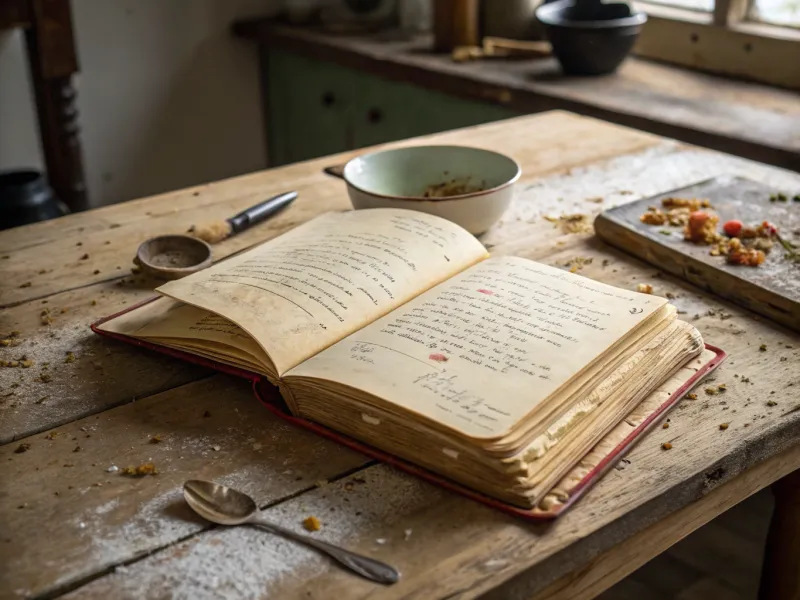
Passed down through generations, handwritten recipes and family cookbooks are treasures that tell the story of culinary heritage. Each page is filled with the flavors of tradition, the essence of family gatherings, and the warmth of home-cooked meals.
Crafting recipes by hand was more than just cooking; it was an art form, a labor of love that connected us to our roots. These cookbooks were filled with personal notes, anecdotes, and variations that made each dish unique. They were a testament to the creativity and passion that went into every meal.
Today, digital recipes offer convenience, but they lack the personal touch, the history, and the soul of a handwritten cookbook. These cherished relics of the past remind us of the importance of preserving family traditions and passing them on to future generations. Embracing this tradition can deepen our appreciation for food, family, and the stories that bind us together. It’s a way to honor the past while creating new memories around the table.
11. Polaroid and Film Photography
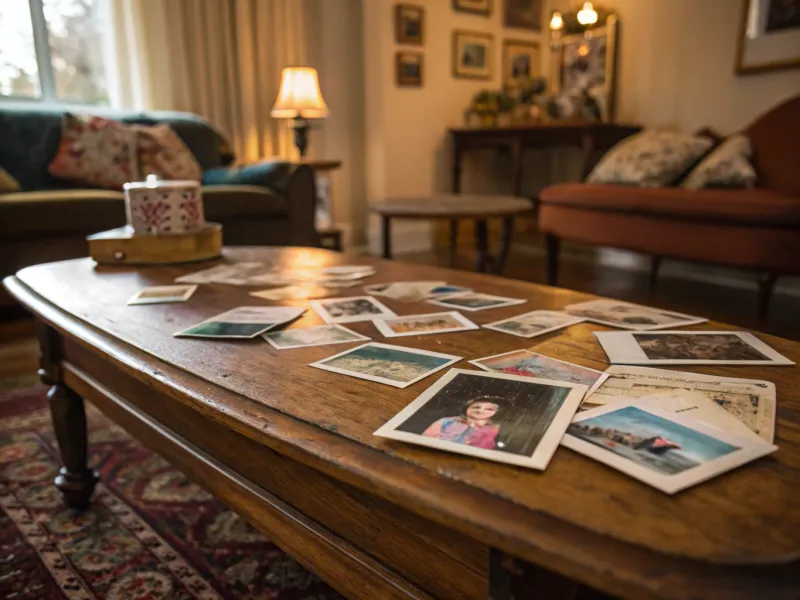
Before digital cameras and smartphones, capturing memories was an art, a process that required patience, skill, and a keen eye for detail. Polaroid and film photography offered a tangible connection to the moments we cherished, freezing time in a way that digital images often fail to replicate.
The anticipation of waiting for a photograph to develop, the excitement of seeing it come to life, was a unique experience. Each snapshot was a keepsake, a piece of history that told a story without the need for filters or editing.
Though technology has made photography more accessible, the charm of Polaroid and film lies in their imperfections, their authenticity. They remind us of the beauty in capturing life’s spontaneous moments, of cherishing the memories that shape us. Embracing this tradition can lead to a deeper appreciation for photography as an art form, inspiring us to see the world through a lens of wonder and nostalgia.
12. Community Block Parties

A vibrant symbol of community spirit, block parties once brought neighborhoods together in a celebration of unity and connection. These gatherings were more than just social events; they were a testament to the bonds that connected us, fostering friendships and creating memories that lasted a lifetime.
With tables lined with homemade dishes, children playing games, and music filling the air, block parties were a time to relax, laugh, and connect with neighbors. They offered a sense of belonging, a feeling of being part of something larger than oneself.
In today’s fast-paced world, the tradition of block parties has become less common, as digital connections often replace face-to-face interactions. Yet, the value of community remains unchanged. Embracing this tradition can strengthen our ties to those around us, reminding us of the importance of human connections in an increasingly digital age. It’s a way to build a sense of community, one friendship at a time.
13. Bowling Leagues
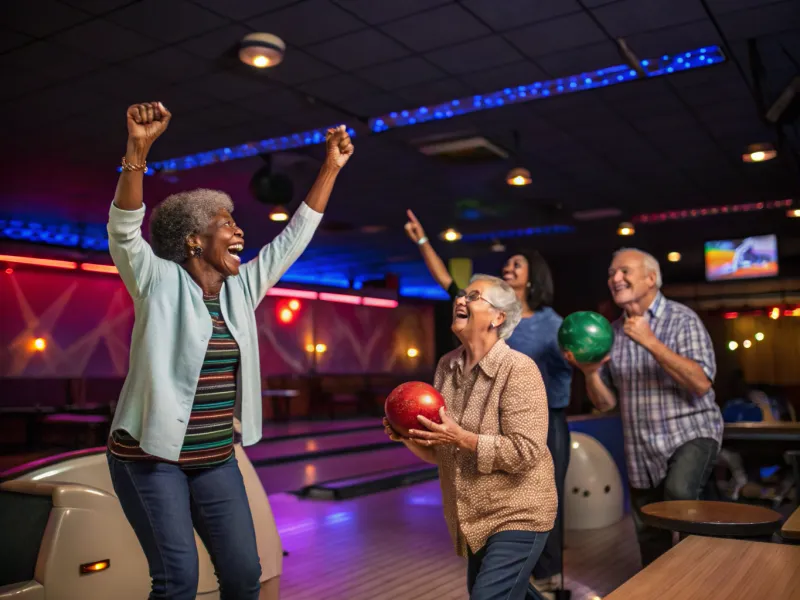
Once a staple of social life, bowling leagues were more than just a pastime; they were a community of camaraderie, competition, and friendship. These leagues offered a space where people of all ages could come together, enjoy the thrill of the game, and share a sense of belonging.
Bowling alleys were buzzing with laughter, cheers, and the satisfying sound of strikes. Teams formed bonds that went beyond the lanes, creating friendships that lasted a lifetime. It was a tradition that celebrated both the joy of the game and the connections it fostered.
As entertainment options have evolved, bowling leagues have seen a decline, yet the sense of community they offered is something worth preserving. Embracing this tradition can bring us together in a shared pursuit of fun, competition, and connection. It’s a reminder of the simple pleasures that enrich our lives and the friendships that make them meaningful.
14. Radio Dramas and Storytellers
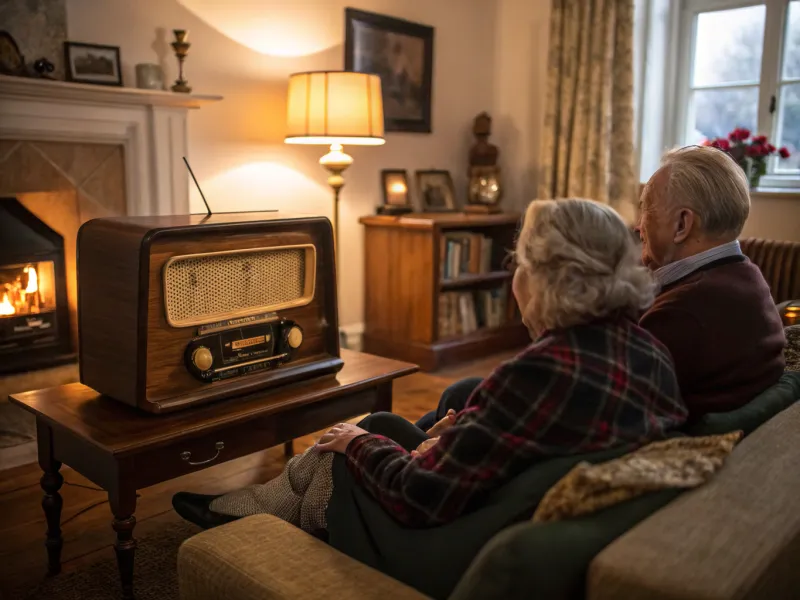
Long before television and streaming services, radio dramas were a gateway to worlds of imagination and adventure. The Baby Boomer generation grew up listening to these captivating stories, where every sound, voice, and pause painted vivid pictures in the mind.
Radio was more than just entertainment; it was an art form. Storytellers and actors brought characters to life, weaving tales that transported listeners to far-off places. Families gathered around the radio, creating memories and sharing experiences that were both thrilling and comforting.
Though technology has transformed how we consume media, the magic of radio dramas endures. They remind us of the power of imagination, the joy of storytelling, and the connection that comes from shared experiences. Embracing this tradition can inspire us to explore new forms of creativity, to find joy in the simplicity of listening and imagining. It’s a celebration of a bygone era, a way to honor the stories that shaped our lives.
15. Community Volunteering
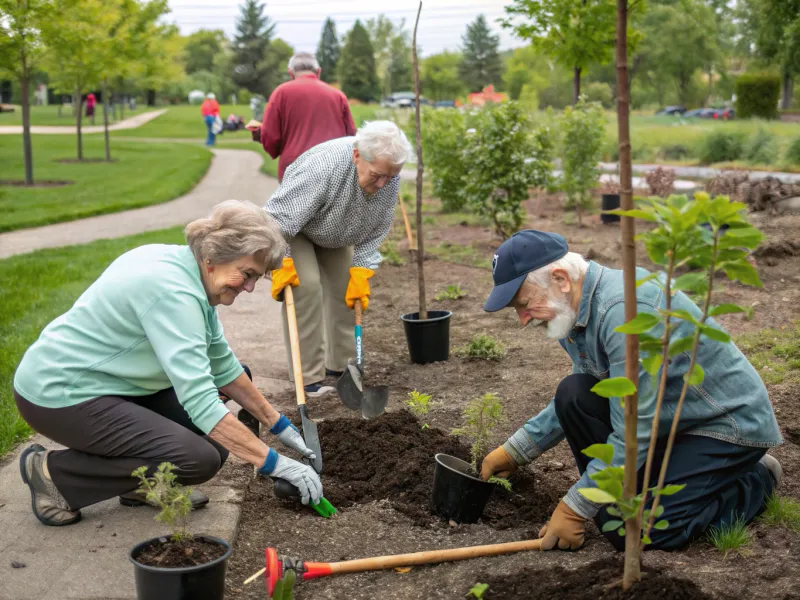
Volunteering was once a cornerstone of community life, a way for individuals to give back, make a difference, and connect with others. The Baby Boomer generation understood the power of collective action, the impact of coming together to support causes that mattered.
From organizing charity events to cleaning up neighborhoods, volunteering fostered a sense of purpose and camaraderie. It taught us the value of selflessness, of contributing to something greater than ourselves, and the joy that comes from helping others.
Today, while volunteering opportunities abound, the spirit of community involvement has waned. Yet, the benefits of volunteering remain unchanged. It’s a tradition that enriches both the giver and the receiver, offering a sense of fulfillment and connection that is deeply rewarding. Embracing this tradition can lead to stronger communities, where individuals come together to create positive change and build a brighter future.
16. Social Clubs and Organizations
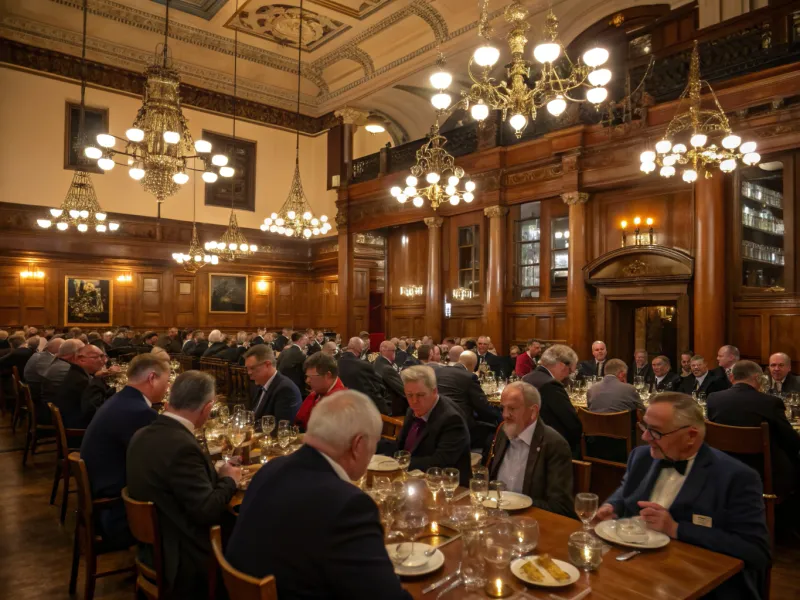
Social clubs were once vibrant hubs of activity, bringing people together to share interests, ideas, and companionship. For the Baby Boomer generation, these clubs were a way to connect, learn, and grow, fostering friendships and creating networks that enriched their lives.
From book clubs to hobby groups, social organizations offered a sense of belonging, a place where individuals could find like-minded souls and explore shared passions. They provided opportunities for personal development, leadership, and community involvement.
As digital connections have replaced in-person interactions, the tradition of social clubs has dwindled. Yet, the value of real-world connections and shared experiences remains. Embracing this tradition can bring us together in meaningful ways, offering a sense of belonging and a space to explore our interests. It’s a reminder of the joy of community, the power of collaboration, and the richness of human interaction.
17. Shopping at Local Markets
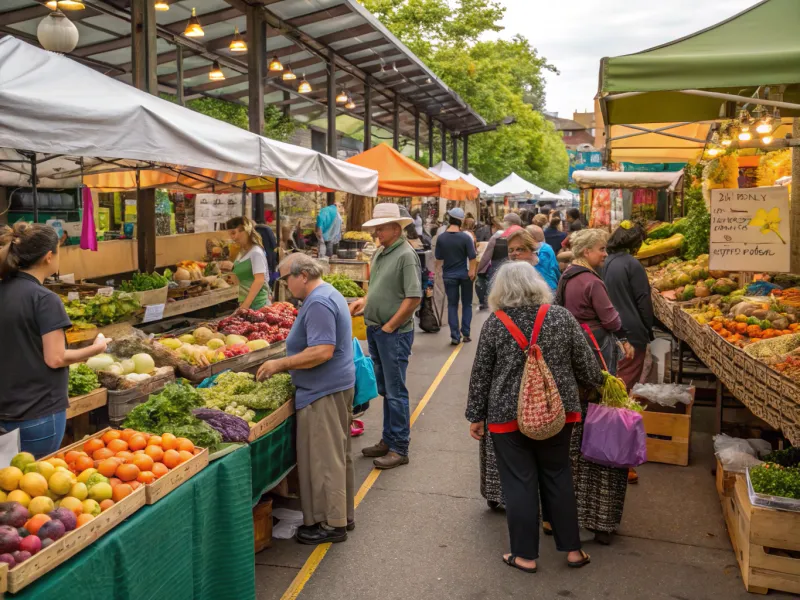
Once, shopping was an experience, a chance to connect with local vendors, discover unique products, and support community businesses. Local markets were a hub of activity, offering fresh produce, handmade goods, and a sense of community that big-box stores couldn’t replicate.
The Baby Boomer generation valued the personal touch, the relationships built with local sellers who knew their names and preferences. Shopping was more than a transaction; it was a social experience, a way to engage with the community and support local economies.
Today, convenience often trumps the experience, as online shopping and large retailers dominate. Yet, the charm of local markets remains. Embracing this tradition can lead to a more sustainable and connected way of living, where we appreciate the stories behind the products and the people who make them. It’s a way to support local businesses, foster community ties, and enjoy the richness of unique and personal shopping experiences.
18. Attending Live Theater and Performances

In an era of streaming and on-demand entertainment, the thrill of attending live theater and performances is becoming rare. The Baby Boomer generation cherished these events as an opportunity to experience the magic of storytelling, the emotion of live acting, and the shared energy of an audience.
Theater was more than just a show; it was an event, a chance to dress up, socialize, and be transported to another world. From Broadway productions to local plays, each performance offered a unique and unforgettable experience.
While digital entertainment offers convenience, the charm of live theater lies in its authenticity, its ability to connect us with the performers and the story in a way that screens cannot. Embracing this tradition can lead to a deeper appreciation for the arts, a celebration of creativity, and a reminder of the shared human experiences that bind us together. It’s a way to honor the past while supporting the future of live performance.
19. Writing Personal Diaries

Long before social media and digital journaling, writing personal diaries was a cherished tradition, a way to reflect, record, and remember. The Baby Boomer generation understood the value of putting thoughts to paper, creating a personal archive of experiences, emotions, and growth.
Diaries were more than just a collection of entries; they were a window into one’s soul, a place to explore dreams, fears, and hopes without judgment. They offered a sense of privacy and introspection that is often missing in today’s connected world.
While digital platforms offer new ways to express ourselves, the charm of a handwritten diary lies in its tangible nature, its ability to capture the essence of a moment in time. Embracing this tradition can lead to a deeper connection with oneself, a way to explore and understand our inner world. It’s a celebration of personal growth, a tribute to the art of reflection, and a reminder of the stories we carry within us.
See also: 29 Reasons Boomers Believe Old-Fashioned “Courting” Is Much Better Than Modern Dating
20. Building Models and Crafts
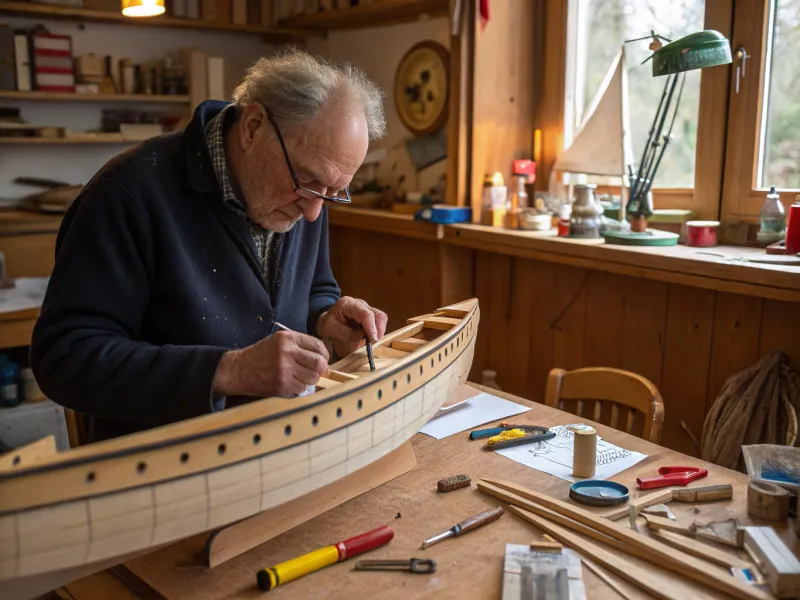
Craftsmanship was once a revered skill, a way to create, build, and express oneself through hands-on activities. The Baby Boomer generation took pride in building models and crafts, dedicating time and effort to perfecting their creations.
Whether constructing model airplanes, crafting handmade gifts, or designing intricate art pieces, these activities offered a sense of accomplishment and joy. They taught patience, precision, and the value of working with one’s hands, creating something tangible and lasting.
Today, as technology offers instant gratification, the tradition of craftsmanship is fading. Yet, the satisfaction of building something with your own hands remains unmatched. Embracing this tradition can lead to a deeper appreciation for creativity, a way to unwind and connect with the present moment. It’s a celebration of skill, a tribute to the art of making, and a reminder of the beauty in creating something from scratch.
21. Picnics and Outdoor Gatherings
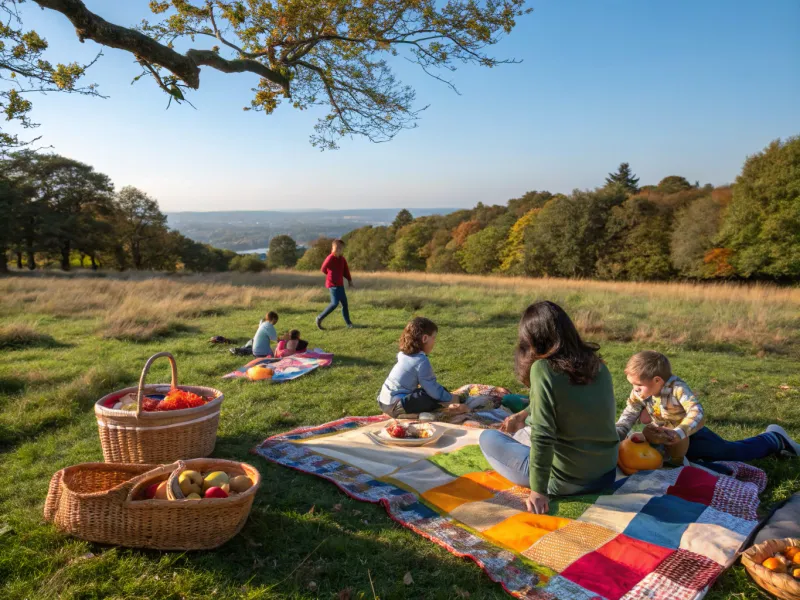
Picnics and outdoor gatherings once symbolized the joy of nature, relaxation, and connection. For the Baby Boomer generation, these outings were a chance to escape the hustle and bustle, unwind, and enjoy the simple pleasures of life.
Whether at a local park, by a tranquil lake, or in a backyard, picnics offered a space to savor good food, laughter, and the company of loved ones. They reminded us of the beauty of simplicity, the joy of being present, and the bonds that connect us.
As life becomes busier, the tradition of picnics has become less common, yet the value of spending time outdoors remains unchanged. Embracing this tradition can lead to a more balanced and fulfilling life, where we prioritize connection, relaxation, and the beauty of nature. It’s a way to celebrate the world around us, to create lasting memories, and to cherish the moments that make life rich.
22. Writing Thank You Notes
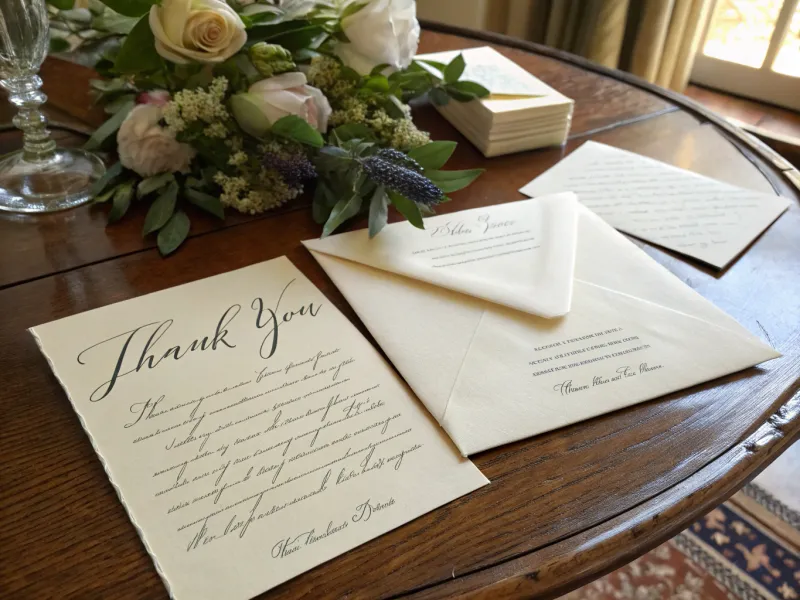
In a world where gratitude can be expressed with a quick text or email, the tradition of writing thank-you notes is fading. The Baby Boomer generation understood the power of a heartfelt note, a tangible expression of appreciation that required time, thought, and effort.
Thank-you notes were more than just a formality; they were a gesture of kindness, a way to acknowledge the impact of someone’s actions and to express genuine gratitude. Each note carried a personal touch, reflecting the writer’s voice, sincerity, and connection to the recipient.
While digital communication offers convenience, the charm of a handwritten thank-you note lies in its authenticity, its ability to convey more than words alone. Embracing this tradition can lead to deeper connections, a way to show appreciation and build meaningful relationships. It’s a celebration of gratitude, a tribute to the art of saying thank you, and a reminder of the importance of acknowledging the kindness we receive.
23. Handcrafted Home Décor
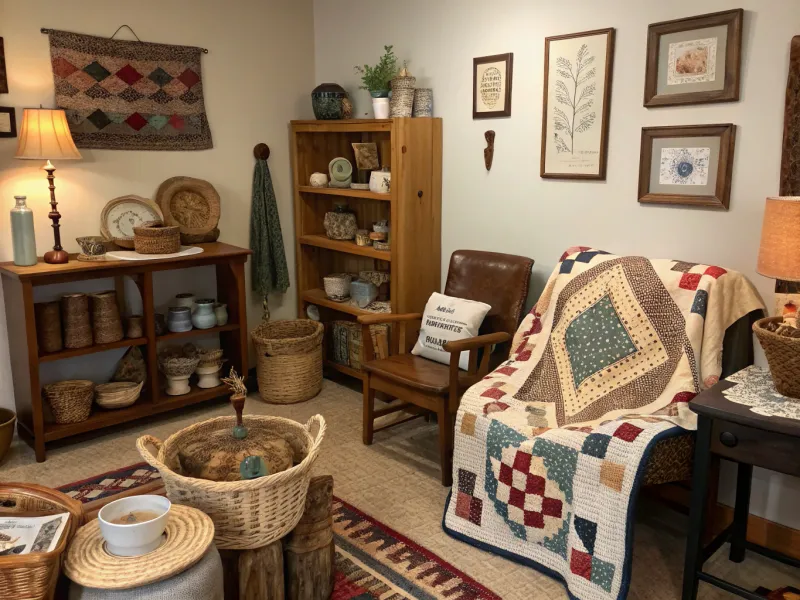
Before mass-produced items filled our homes, handcrafted home décor was a reflection of personal taste, creativity, and skill. The Baby Boomer generation valued the charm and uniqueness of handmade items, each piece telling a story and adding character to their living spaces.
From quilts to pottery, these creations were more than just decorations; they were expressions of artistry, patience, and love. They offered a sense of individuality, a way to make a house feel like a home, filled with warmth and personality.
Today, as ready-made items become more accessible, the tradition of handcrafted décor is fading. Yet, the beauty of handmade lies in its imperfections, its authenticity, and its ability to evoke emotion. Embracing this tradition can lead to a deeper appreciation for craftsmanship, a way to create a space that reflects who we are. It’s a celebration of creativity, a tribute to the art of making, and a reminder of the stories our homes can tell.
24. Personal Photo Albums
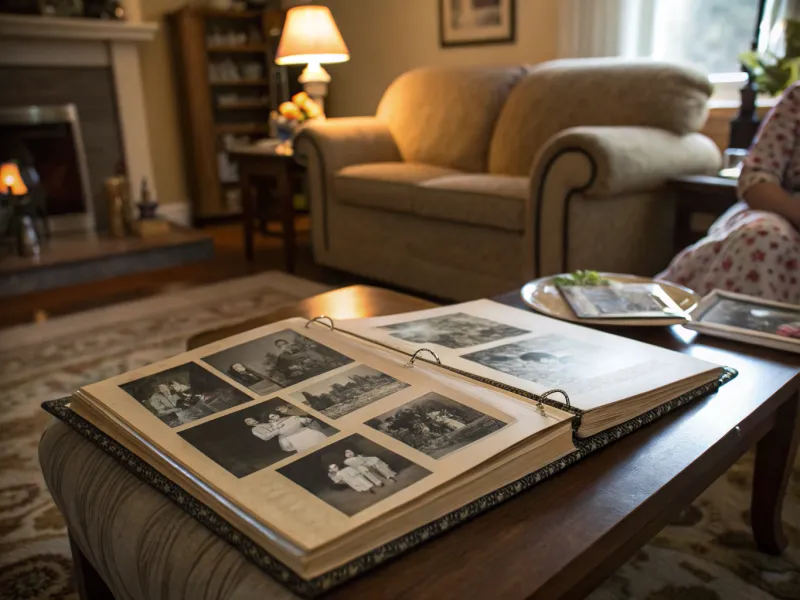
Long before digital photo storage, personal photo albums were cherished keepsakes, filled with memories that told the story of a lifetime. The Baby Boomer generation understood the value of preserving these moments, creating tangible archives of family history and love.
Photo albums were more than just collections of images; they were narratives, each page a chapter in the story of our lives. They offered a sense of continuity, a way to connect with the past and share memories with future generations.
While digital albums offer convenience, the charm of a physical album lies in its tactile nature, its ability to evoke emotion and nostalgia. Embracing this tradition can lead to a deeper connection with our memories, a way to celebrate the moments that shape us. It’s a reminder of the beauty of storytelling, a tribute to the art of photography, and a celebration of the lives we’ve lived.
25. Playing Board Games with Friends
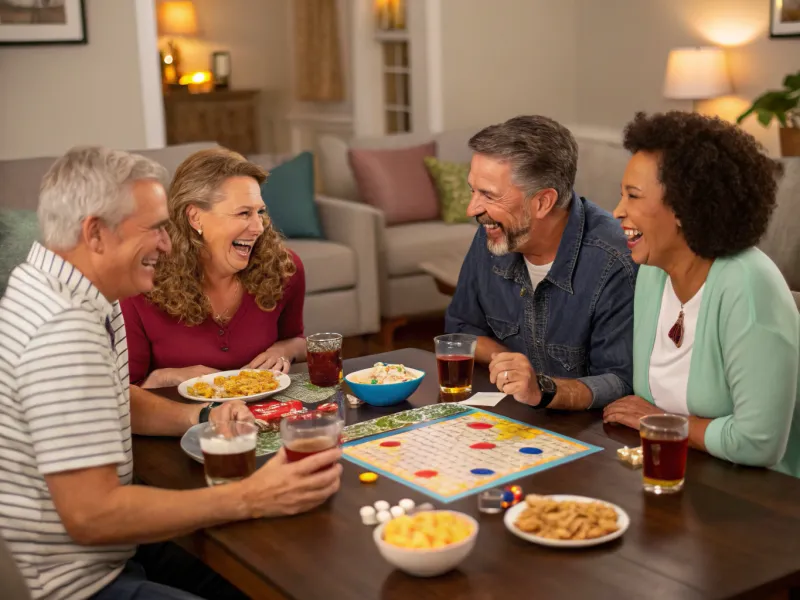
In a world dominated by digital entertainment, the tradition of playing board games with friends is becoming rare. The Baby Boomer generation understood the joy of gathering around a table, engaging in friendly competition, and creating memories that lasted a lifetime.
Board games were more than just pastimes; they were opportunities for connection, laughter, and camaraderie. They taught us the value of strategy, teamwork, and good sportsmanship, offering a break from the fast-paced world and a chance to enjoy the present moment.
While digital games offer convenience, the charm of board games lies in their tangible nature, their ability to bring people together and foster genuine interaction. Embracing this tradition can lead to richer social experiences, a way to connect with others and create lasting bonds. It’s a celebration of play, a tribute to the art of gaming, and a reminder of the joy of spending time with friends.
See also: 35 Boomer Trends That Are Toxic And Downright Offensive, And It’s Time We Said Something
26. Collecting Stamps and Coins
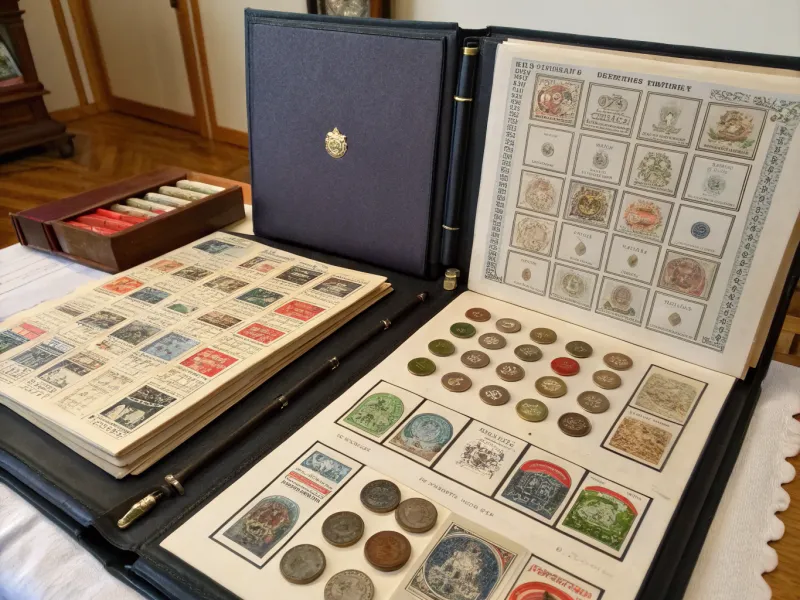
Collecting stamps and coins was more than just a hobby; it was a journey into history, a way to explore the world and its stories. The Baby Boomer generation took pride in their collections, dedicating time and effort to discovering and preserving these artifacts.
Each stamp and coin was a piece of history, a reflection of culture, art, and events that shaped our world. Collecting offered a sense of adventure, a way to learn about different countries and time periods, fostering curiosity and a love for learning.
Today, as digital hobbies become more popular, the tradition of collecting stamps and coins is fading. Yet, the value of these collections lies in their ability to connect us to the past, to inspire interest and exploration. Embracing this tradition can lead to a deeper appreciation for history, a way to engage with the world and its stories. It’s a celebration of curiosity, a tribute to the art of collecting, and a reminder of the richness of our heritage.

